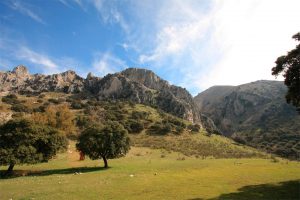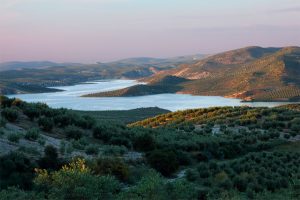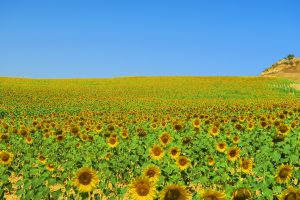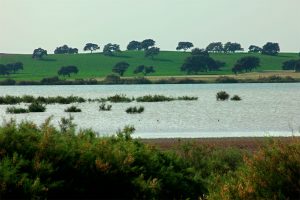
Parque Natural y Geoparque Sierras Subbétcias
From seas of olive groves to orchards and vast, flat farmlands contrasting with rocky peaks, the sheer diversity of the landscapes that you will discover on the Caminos de Pasión route will simply blow you away. The towns’ croplands produce designation of origin olive oil and wine and are abundant with fruit trees, such as quince and cherries.
Through their produce, you’ll come to learn how the towns’ livelihoods and customs have been greatly influenced by their natural surroundings and how they define a way of life. Specks of different colours pepper these landscapes depending on the season, given the local flora and fauna. Water also plays an important role in shaping the landscape of these towns.
As such, in Alcalá la Real, you can enjoy different spots like “Los Llanos” or “Los Tajos” or hike its ancient watchtower trail. Red is a prominent colour in this town: during autumn, an autochthonous species of sumach blooms, lining the hiking trails with blazing red while summer is cherry season, turning the fields a sea of crimson.

Embalse de Vadomojón, Baena
In Baena, you’ll marvel at endless vistas of olive trees sandwiched between contrasting rocky peaks, such as the Cueva del Yeso (gypsum cave), and the calm waters of the Vadomojón reservoir, located in the village Albendín, a great spot for water sports or a spot of fishing.
Cabra is known for its vegetable plots, which fit harmoniously with the surrounding Sierra Subbéticas natural park. In the Sierra de Cabra, visitors can spot interesting geological landforms, such as the Lapiaz de los Lanchares or climb to the top of El Picacho peak, where griffon vulture sightings are common.

Campos de girasoles, Carmona
The calcarenite rocks of Los Alcores give Carmona’s landscape its characteristic sandy colour. Nevertheless, it is the sunflower fields and exceptional sweeping views across the province of Seville’s fertile plains that pique visitors’ interest. La Cascajosa hill is one of the town’s many other highlights.
In Écija, you can appreciate views of never-ending cereal and sunflower fields and partake in open-air activities on the River Genil or the La Campiña sevillana Vía Verde hiking path.
The Sierra de Aras is another place to keep in mind with views stretching across several Andalusian provinces, which together with the Malpasillo reservoir, are Lucena’s main natural attractions.

Lagunas, Osuna
In Osuna, we can find a wide variety of ecosystems: from flat farmlands, covered in a blanket of cereal fields, to lakes nestled in the La Lantejuela endorheic wetlands and even hilly areas, namely El Cerro de La Gomera. All of which are well communicated through Osuna’s vast network of official hiking paths.
Priego de Córdoba’s landscape is defined by its surroundings, as it is set in the heart of the Sierras Subbéticas natural park. You can observe endless rolling olive groves and unique natural settings such as El Pico de la Tiñosa, the highest peak in Cordoba. Neighbouring , surrounded by nature, also appeal to visitors.
Puente Genil boasts the Sierra del Niño and the Sierra del Castillo mountain ranges as well as La Cordobilla reservoir, all of which offer extraordinary natural settings.
Lastly, Utrera’s landscape is unique with marshlands and rice paddies that offer a stark contrast to the Pinar de Doña pine grove or Utrera’s endorheic wetlands nature reserve.





